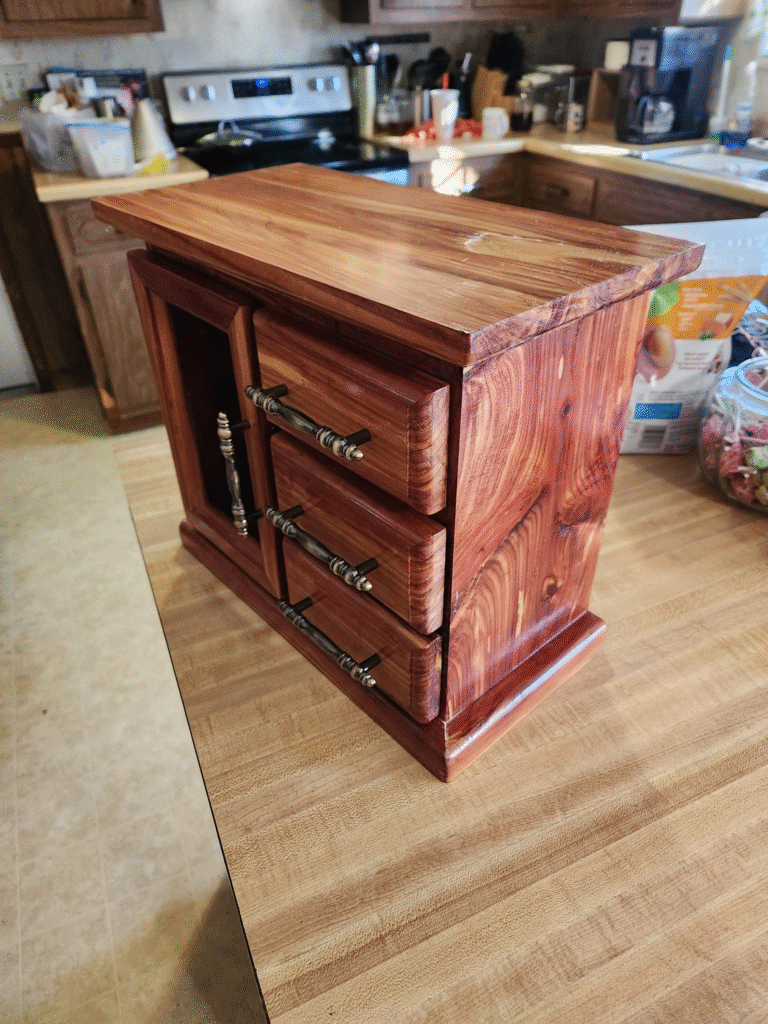Somewhere in a dusty carpentry shed, an argument as old as power tools is still raging.
A carpenter swears by varnish because “that’s what granddad used on the family table and it survived three generations of goat fights and cousin weddings.” Across the bench, someone insists shellac is the holy grail — natural, ancient, and allegedly immortal if the wood gods are pleased. Then a younger, YouTube-certified DIYer walks in, waving a can of polyurethane like an iPhone update, promising “modern science” has ended the debate.
It hasn’t.
Wood finishes are like family heirlooms — they carry history, myths, and lies. Behind every glossy dining table and “weatherproof” rocking chair is a layer of chemistry, centuries of trial and error, and some good old marketing deception. The difference between polyurethane, varnish, and shellac is more than price tags and product labels. It’s a story of durability versus beauty, tradition versus technology, and occasionally, whether you want your finish to melt when someone spills whiskey on it.
Let’s strip back the glossy brochures and look at what actually lasts, what fails, and why your great-grandmother’s dresser is still here when your “high-performance” coffee table is already peeling.
The Ancient Royalty: Shellac
Before polyurethane was even a laboratory daydream, shellac ruled. It’s made from the secretions of the lac bug — yes, insect spit — scraped off trees, refined, and dissolved in alcohol. Sounds unappetizing until you realize that this same substance once coated violins, heirloom cabinets, and the wood-paneled halls of Europe’s old money estates.

Shellac gives wood a warm, amber depth that modern finishes try — and usually fail — to fake. It’s also natural, non-toxic, and dries faster than a Nairobi rumor. But shellac’s immortality is a carefully curated myth. Spill water on it, and it blushes. Leave your whiskey tumbler on it, and you’ll have a permanent white ring of regret. Flexner is blunt about it: shellac protects wood, but it’s vulnerable to heat, solvents, and daily abuse.
Shellac is the finish you choose if you care about aesthetics, tradition, and the kind of furniture you dust, not dine on. It’s history trapped in a thin coat. Beautiful, yes. Immortal, no.
The Workhorse: Varnish
Varnish came along as the industrial age rolled into town, a mix of oils and resins cooked into something that hardened over time. It became the default finish for decades because it did two things shellac couldn’t: resist water and survive sunlight without fainting.

Flexner describes varnish as a middle ground — better moisture resistance than shellac, more forgiving under pressure, but slower to dry. Traditional oil-based varnishes can take days between coats, and sanding is mandatory if you want that perfect smoothness.
But varnish has a hidden personality flaw: time. Give it ten years, and many formulas yellow like nicotine-stained wallpaper. That deep walnut finish you perfected? It’s now an orangey relic. That said, if you’re after something old-school and tried-and-tested, varnish offers respectable longevity, especially indoors.
Think of varnish as the seasoned uncle who’s seen enough life to know shortcuts but still gets winded on stairs. Reliable, but not invincible.
The Upstart: Polyurethane
Polyurethane swaggered onto the scene in the mid-20th century, armed with chemistry degrees and corporate marketing budgets. Unlike varnish and shellac, polyurethane doesn’t just sit pretty — it forms a hard plastic-like layer that laughs in the face of water rings, toddler crayons, and your dog’s claws.

There are two tribes here: oil-based and water-based polyurethane. Oil-based gives a warm amber glow and insane durability, but it takes its sweet time drying and will darken as it ages. Water-based polyurethane, on the other hand, dries quickly, stays clear, and smells less like a chemical spill — but it’s slightly less scratch-resistant.
Flexner’s tests are merciless: polyurethane, especially oil-based, is king for durability. It resists moisture, solvents, and heat better than either shellac or traditional varnish. It’s not elegant. It’s not “romantic.” But it works.
The Real Test: Spills, Sunlight, and Time
Let’s be honest. Most marketing claims about “lasting protection” evaporate the moment someone leaves a sweaty glass on your table in January. Here’s the hierarchy, stripped of nostalgia:
- Shellac → Gorgeous depth, fails under heat and moisture.
- Varnish → Good compromise, better UV resistance, but yellows over time.
- Polyurethane → Top-tier durability, but can look plasticky if over-applied.
And here’s the kicker: none of them are forever. All finishes deteriorate — they just die differently. Shellac blushes and flakes, varnish yellows and cracks, polyurethane eventually scratches and dulls. The real question isn’t “what lasts forever?” but “how long before you notice it doesn’t?”
Verdict: Function vs Romance
If you’re restoring a vintage writing desk or crafting heirloom furniture, shellac has the soul you’re chasing. For that handmade farmhouse dining table where kids will spill Fanta and life will happen, polyurethane wins, no contest. If you’re somewhere in between — wanting durability without looking like you shrink-wrapped your wood — a high-quality varnish sits in the sweet spot.
In other words, don’t ask “which finish lasts the longest?” Ask what you want to last: the sheen, the color, or the story behind the piece.
Final Thought
Flexner says finishing is 90% patience and 10% chemistry. You can pick the toughest product on the market, but if you rush drying times, skip sanding, or forget to wipe off excess, you’re basically embalming your mistakes.
The right finish isn’t just about endurance. It’s about what you want your wood to say in 20 years.